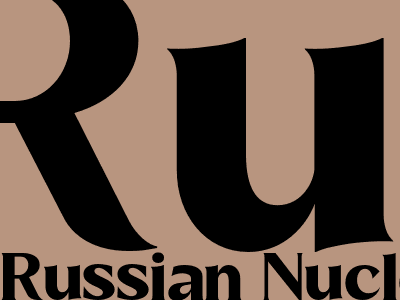
Russian Nuclear Deterrence at Sea: A Historical Perspective
Introduction
Russia's nuclear deterrence at sea has played a critical role in preserving its national security and shaping international relations throughout the Cold War and beyond. With its vast coastline and strategic nuclear arsenal, Russia has maintained a robust naval presence in all major oceans, armed with ballistic missile submarines (SSBNs), nuclear-powered cruise missile submarines (SSGNs), and surface ships carrying nuclear weapons.
In this comprehensive blog post, we will explore the history, evolution, and current status of Russia's nuclear deterrence at sea. We will examine its strategic significance, operational challenges, and potential implications for international security in the 21st century.
Origins of Russia's Nuclear Deterrence at Sea
The origins of Russia's nuclear deterrence at sea can be traced back to the Cold War era. Following the launch of the world's first nuclear-powered submarine, USS Nautilus, by the United States in 1954, the Soviet Union recognized the strategic value of nuclear-powered submarines for delivering nuclear weapons.
In 1958, the Soviet Union launched its first nuclear-powered ballistic missile submarine, K-19. This marked a significant milestone in the development of Russia's nuclear deterrence posture, as it allowed the country to extend its nuclear reach beyond the range of land-based missiles and evade detection.
Expansion of the Submarine Fleet
Throughout the Cold War, the Soviet Union expanded its submarine fleet rapidly. By the mid-1970s, it had the largest submarine force in the world, consisting of over 300 submarines, including more than 100 SSBNs.
These submarines were equipped with advanced nuclear reactor technology, allowing them to remain submerged for extended periods, increasing their survivability and strategic value. They were also armed with intercontinental ballistic missiles (ICBMs), which could carry multiple nuclear warheads and strike targets thousands of kilometers away.
Strategic Significance
Russia's nuclear deterrence at sea has been a cornerstone of its strategic defense policy since the Cold War. SSBNs play a vital role in maintaining a credible second-strike capability, ensuring that Russia can retaliate against an enemy attack, even if its land-based nuclear forces are destroyed.
The secrecy, mobility, and extended range of SSBNs make them a formidable deterrent against potential adversaries. They can patrol in remote areas of the ocean, making it difficult to detect and neutralize them.
Operational Challenges and Modernization
Despite its strategic significance, Russia's nuclear deterrence at sea has faced operational challenges over the years. Aging submarines, dwindling budgets, and the need for modernization have hindered the effectiveness of the fleet.
In recent years, Russia has embarked on a modernization program to upgrade its submarine fleet with cutting-edge technology and enhance its operational capabilities. This includes the development of new classes of SSBNs and SSGNs, as well as the deployment of advanced weapons systems.
Implications for International Security
Russia's nuclear deterrence at sea continues to have significant implications for international security in the 21st century. The existence of a large and modernized Russian submarine fleet raises concerns about nuclear proliferation and the potential for accidents or miscalculations.
In light of rising tensions between Russia and NATO countries, the role of nuclear deterrence at sea has become increasingly important. It is crucial for all stakeholders to engage in dialogue and confidence-building measures to reduce the risk of nuclear confrontation.
Conclusion
Russia's nuclear deterrence at sea has evolved significantly since its origins in the Cold War era. It remains a vital component of Russia's defense strategy, ensuring the country's ability to retaliate against a nuclear attack and deter potential adversaries.
The modernization of the Russian submarine fleet, coupled with the challenges and uncertainties of the contemporary international security environment, requires ongoing attention and engagement from policymakers and analysts alike.
Understanding the history, evolution, and current status of Russia's nuclear deterrence at sea is essential for assessing its implications for international relations and global security in the years to come.